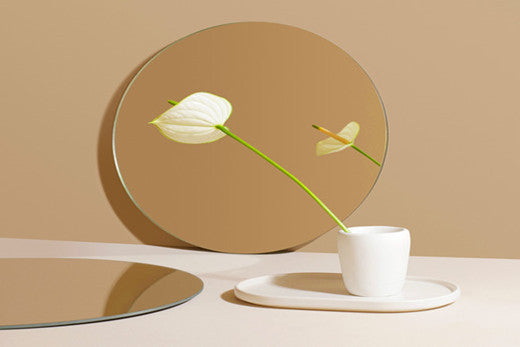When were mirrors invented? Who invented the first mirror? This seems to be an interesting question. From using a pool of still water to check the reflection to using a smart high-quality mirror, human beings have gone through a long journey. Let's ride the time machine and travel back in the river of history.
Still Water as Mirrors
Our prehistoric ancestors probably took a pool of still water as a mirror, or collect water with a primitive vessel and look into the vessel to check their reflection for thousands and millions of years before polished obsidian was used as a mirror.
Polished Stone as Mirrors
The earliest physical mirrors that people could hold in hands were pieces of polished stone such as obsidian coming from volcanic eruptions. People would heavily polish the stone until it shows a beautiful reflection, making it the world’s first mirror. However, as you may perceive, theses obsidian mirrors were really heavy, so they usually weren’t made large. They were mainly used as small decorations by the wealthy. Legend has it that the peoples of ancient Mexico used polished obsidian mirrors as instruments of black magic. By gazing into a mirror’s smoky depths, sorcerers can travel to the world of gods and ancestors.
Examples of obsidian mirrors found in Anatolia (modern-day Turkey) have been dated to around 6000 BC. Other polished stone mirror examples were from Central and South America date from around 2000 BC. The earliest mirrors one can hold in hands in China were made from polished jade.
Polished Metal as Mirrors
By the Bronze Age most regions were using mirrors made from polished plates of bronze, copper, silver, or other metals. Such metal mirrors were always there throughout the Middle Ages in Europe. During the Roman Empire, silver mirrors were in common use by servants.
However, common metal mirrors tarnished easily and required frequent polishing, but even heavily polished, theses mirrors still had low reflectivity. Most ancient metal mirrors had a round shape, and their backside was usually embellished with delicate and beautiful ornamentation.
Metal-coated Glass Mirrors
Lead-coated mirrors: from convex to flat
Since glass itself was likely to be invented in Lebanon, it’s not surprising that it was the birthplace of the earliest modern mirrors. Craftsmen was discreet about the glass-making following a step-by-step method, they should blow a thin layer of molten glass into a bubble, and then pour hot lead into the bulb of glass. The lead coated the inside of the glass. When the glass cooled down, it was broken and cut into convex pieces of mirrors. Thus, their surface ended up being either concave or convex and tended to distort the reflection on it.
Mirror quality was improved along with the development of glass-making technique, they transform from convex surface to even and flat one. Glassmakers in France made flat glass plates by blowing glass bubbles, spinning them rapidly to flatten them, and cutting rectangles out of them. A better method, developed in Germany and perfected in Venice, was to blow a cylinder of glass, cut off the ends, slice it along its length, and unroll it onto a flat hot plate. Venetian glassmakers also adopted lead glass for mirrors, because of its crystal-clarity and its easier workability.
Metal-coated mirrors are a huge improvement in mirror-making since the metal provides good reflectivity, and the glass provides a smooth surface to protect the metal from scratches and tarnish. But lead-coated mirrors were still not the perfect because the lead layer was not strong enough to prevent cracking by the heat of the molten metal.
Tin-mercury-coated mirrors: from expensive to affordable
During the early Europe renaissance, a fire-gilding technique developed to produce an even and highly reflective tin coating for glass mirrors. The back of the glass was coated with a tin-mercury amalgam, and the mercury was then evaporated by heating the piece. This process caused less thermal pressure to the glass than the molten-lead method. Venice becomes a center in producing mirrors adopting this method. Venetian mirrors were served as luxury decorations for palaces throughout Europe, and were very expensive.
However, by the end of that century the secret was leaked through industrial espionage. French workshops succeeded in large-scale industrialization of the process, eventually making mirrors affordable to the masses, in spite of the toxicity of mercury’s vapor.
Silver-coated mirrors
Silver-coated metal mirrors were developed in China as early as 500 CE. The bare metal was coated with an amalgam, then heated until the mercury boiled away. Other historians believed that the invention of the silvered-glass mirror is credited to German chemist Justus von Liebig in 1835. His wet deposition process involved the deposition of a thin layer of metallic silver onto glass through the chemical reduction of silver nitrate. This silvering process was adapted for mass manufacturing and led to the greater availability of affordable mirrors. The metal coating of glass mirrors is usually protected from abrasion and corrosion by a layer of paint applied over it.
Aluminum-coated mirrors
Modern mirrors use aluminum rather than silver. The aluminum is applied via vacuum, and will bond directly to cooled glass. Aluminum can oxidize, but a protective layer such as paint can be applied to prevent oxidation. Aluminum coated mirror has no double image, giving a true reflection.

Conclusion
Throughout history, from prehistory to present day, mirrors have played an important role in society. At the beginning, they were used by the wealthy or the powerful as a status symbol, while now they are a commodity for the common people. The mirror making process has transformed from obsidian glass, to metal. Silver and aluminum coatings replace toxic mercury as the mostly used metal coatings.



















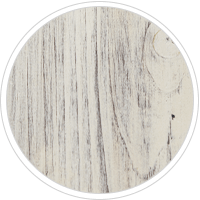
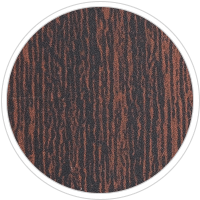
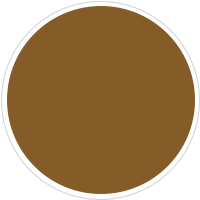
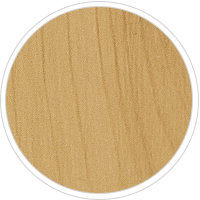



 Contact us
Contact us


